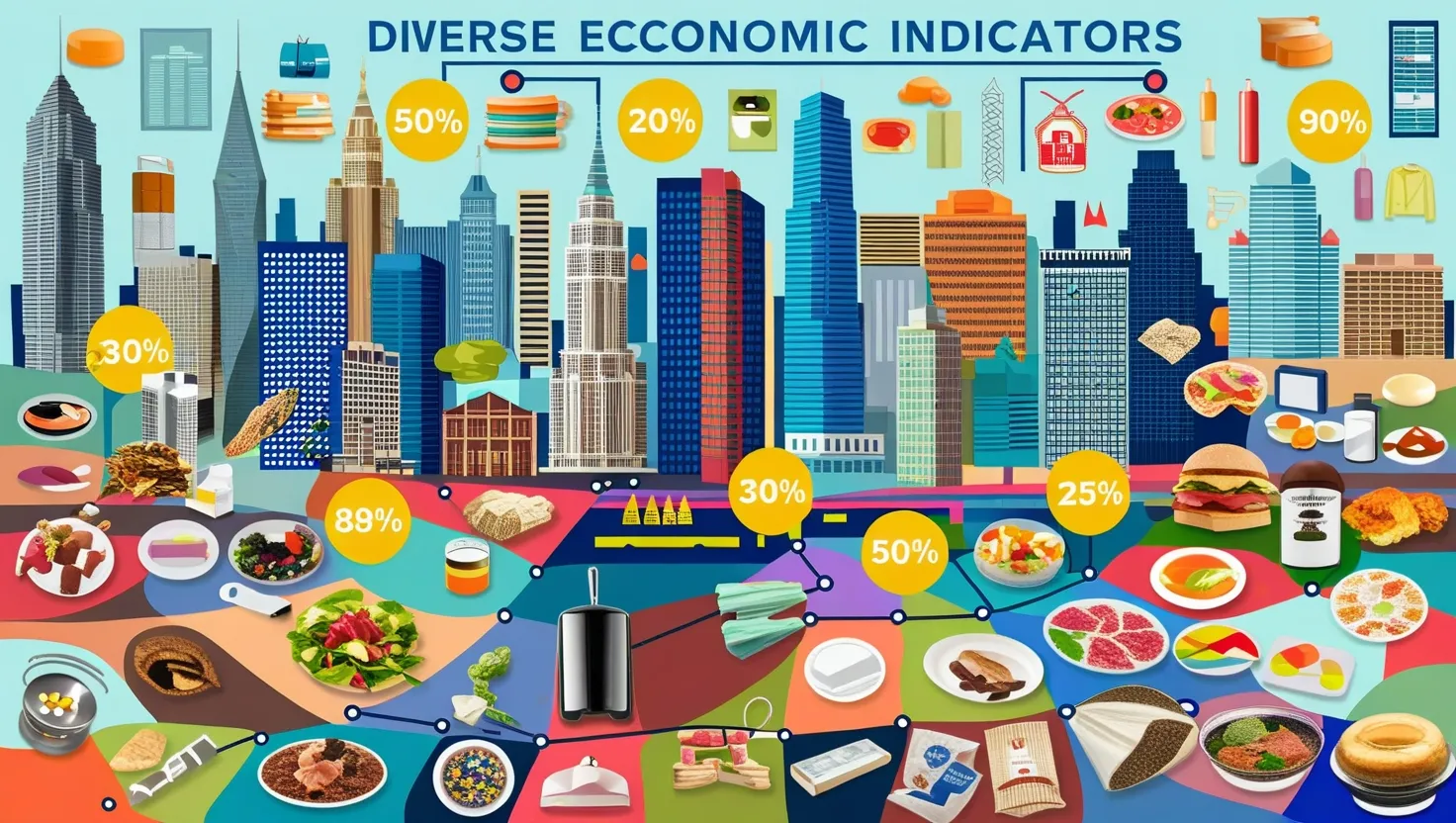As we delve into the complex world of economics, it’s easy to get lost in the sea of traditional indicators like GDP growth, inflation rates, and unemployment figures. However, there are some lesser-known, yet fascinating, economic indicators that can provide unique insights into the health and direction of an economy. Let’s explore eight of these unconventional economic indicators and see how they can add a fresh perspective to our understanding of economic trends.
The Lipstick Index: A Cosmetic Barometer
The concept of the “Lipstick Index” was popularized by Leonard Lauder, the former chairman of Estee Lauder, who observed that during economic downturns, women often opt for smaller, more affordable luxuries like lipstick instead of splurging on expensive items. However, this theory has been somewhat discredited over the years, as subsequent recessions have shown that lipstick sales do not always follow this predictable pattern.
“As the economy gets rough, sales of lipstick go up,” Lauder once said, but this maxim no longer holds true in today’s market. With the rise of luxury skincare and makeup, consumers are now more discerning, and the allure of a $300 bottle of retinol cream can outweigh the appeal of a $20 lipstick.
Men’s Underwear Index: A Measure of Consumer Confidence
The Men’s Underwear Index, though less discussed, is another intriguing indicator. The idea is that men tend to buy new underwear only when they feel financially secure. During economic downturns, this discretionary spending decreases, reflecting a broader decline in consumer confidence.
“Consumer confidence is the backbone of any economy,” a financial analyst once noted. “When people feel secure, they spend; when they don’t, they cut back on even the essentials.”
Skyscraper Index: Reaching New Heights
The Skyscraper Index suggests that the construction of exceptionally tall buildings often coincides with the peak of an economic cycle. This phenomenon has been observed repeatedly throughout history, from the Chrysler Building in the 1930s to the Burj Khalifa in the late 2000s.
“Skyscrapers are often the physical manifestation of economic hubris,” an urban planner remarked. “They symbolize the peak of a boom, just before the inevitable bust.”
Hemline Index: Fashion as a Forecast
The Hemline Index proposes that the length of women’s hemlines can be correlated with economic conditions. During prosperous times, hemlines tend to rise, while during recessions, they fall. This theory, though whimsical, has some historical basis.
“Fashion reflects the mood of the times,” a fashion historian said. “When times are good, fashion is bold and daring; when times are tough, it becomes more conservative.”
Hot Waitress Index: A Service Sector Signal
The Hot Waitress Index, popularized by a Wall Street analyst, suggests that the attractiveness of waitresses in restaurants can be an indicator of economic health. The theory is that during good times, restaurants can afford to hire more attractive staff, while during bad times, they cannot.
“This index is more about the psychology of spending,” the analyst explained. “When people feel good about their financial situation, they are more likely to indulge in luxuries, including dining out at places with attractive staff.”
Cardboard Box Index: The Unsung Hero of Manufacturing
The Cardboard Box Index tracks the production of cardboard boxes as a proxy for manufacturing activity. Since boxes are used in the packaging of a wide range of goods, an increase in box production can indicate a rise in manufacturing output.
“Cardboard boxes are the unsung heroes of the supply chain,” a logistics expert noted. “They tell us a lot about what’s moving and what’s not in the economy.”
Mosquito Bite Index: A Bizarre but Useful Metric
The Mosquito Bite Index, though bizarre, has been used in some regions to track economic activity. The idea is that during economic downturns, people may spend less on pest control, leading to an increase in mosquito bites.
“This index might seem ridiculous, but it highlights the indirect effects of economic conditions on everyday life,” a public health official said. “When people cut back on discretionary spending, it can have unexpected consequences.”
Big Mac Index: A Global Price Comparator
The Big Mac Index, created by The Economist, compares the prices of Big Macs across different countries to gauge the relative purchasing power of their currencies. This index provides a simple yet effective way to understand currency valuations and inflation rates.
“The Big Mac Index is a fun way to look at serious economic issues,” an economist joked. “It shows that even in the complex world of international finance, there are simple truths to be found.”
Using These Indicators Wisely
While these unconventional indicators can be intriguing, they should not replace traditional economic data but rather complement it. By looking for patterns and correlations between these indicators and market trends, investors and economists can gain a more nuanced understanding of economic conditions.
“Traditional indicators are crucial, but they don’t tell the whole story,” a financial advisor advised. “These unconventional indicators can provide the missing pieces of the puzzle, helping us make more informed decisions.”
Actionable Insights
So, how can you incorporate these findings into your investment decision-making process? Here are a few actionable insights:
- Monitor Lipstick Sales: While the Lipstick Index may not be as reliable as it once was, tracking sales of affordable luxuries can still provide insights into consumer spending habits.
- Watch Skyscraper Construction: If you notice a surge in skyscraper projects, it might be a sign that the economy is nearing its peak.
- Track Cardboard Box Production: An increase in box production could signal a rise in manufacturing activity, which can be a positive indicator for the economy.
- Consider the Big Mac Index: This index can help you understand currency valuations and inflation rates in a more relatable way.
Conclusion
Economics is a complex and multifaceted field, and sometimes the most unexpected indicators can provide the most valuable insights. By keeping an eye on these unconventional economic indicators, you can gain a broader and more nuanced understanding of the economic landscape.
As the famous economist John Maynard Keynes once said, “The difficulty lies not so much in developing new ideas as in escaping from old ones.” These unconventional indicators offer a fresh perspective, helping us escape the old ways of thinking and see the economy in a new light.
So, the next time you hear about a new skyscraper being built or notice a change in hemline lengths, remember that these could be more than just trivial observations – they could be signs of larger economic trends. And who knows, maybe the next big economic indicator will be something as unexpected as the number of mosquito bites in a given region. The world of economics is full of surprises, and sometimes it’s the unconventional that leads us to the most valuable insights.






